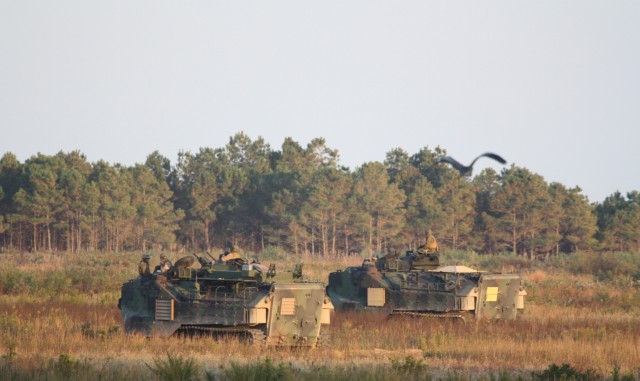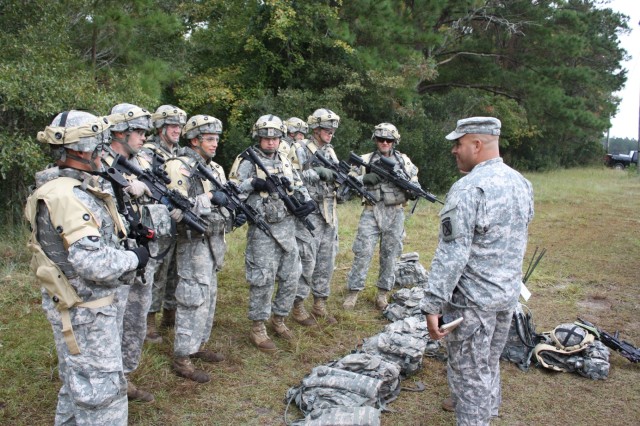CAMP LEJEUNE, N.C. (Army News Service, Nov. 9, 2009) -- The largest exercise designed to examine advanced combat identification technologies that can reduce the risk of fratricide on future battlefields wrapped up recently.
The U.S. Joint Forces Command exercise, Bold Quest 2009, was held at both Camp Lejeune and Marine Corps Air Station Cherry Point, N.C. The joint exercise included participants from the 4th Brigade Combat Team, 10th Mountain Division; the Marines, the Air Force, the Navy, and 10 partner nations.
The exercise allowed U.S. forces to team with multi-national partners to demonstrate and assess cooperative combat ID technologies that can provide warfighters with the means to better identify friendly forces on the battlefield. The objective of the exercise was to assess air-to-ground combat ID technologies in a stressful and challenging operational environment to enhance coalition combat effectiveness and reduce the potential of fratricide across all services.
"This was a great opportunity to come here and help evaluate some of these new CID technologies," said Army 1st Sgt. Joseph Gaskin, 2nd Battalion, 30th Infantry Regiment, 4th BCT, 10th Mountain Division. "This was all about preventing fratricide and I'll be very interested to hear what the final results have to say. Excellent exercise."
Exercise technical initiatives included prototype systems to enable aircrew and controllers to exchange position information digitally with friendly ground elements. The expected outcome will improve target acquisition processes to reduce the risk of fratricide.
According to exercise leaders, the data collected during the demonstration will be analyzed to provide decision-makers with the information they require to determine the military utility of the technologies and to help make informed equipment procurement and fielding decisions.
"Our focus now is on conducting post-event analysis so that we can inform U.S. and allied investment decision-makers about the performance of these important CID technologies," said John Miller, USJFCOM Joint Capability Integration and Fires Division's BQ 09 operational manager. "We believe our BQ team was able to successfully collect the information needed to perform a thorough assessment of these respective combat ID technologies. We couldn't have done this without the tremendous cooperation of our entire joint and coalition team."
Joint partners said they found the exercise both challenging and relevant.
"In combat, the only thing worse than enemy fire is incoming friendly fire," said Marine Corps Sgt. Aldo Wong, section leader, Mobility Counter-Mobility Platoon, Headquarters and Service Company, 2nd Assault Amphibious Battalion, Camp Lejeune. "BQ provided us with a challenging environment to operate in, which is the only way to solve the complex issue of CID."
Miller said combat ID technology is just one more tool on the battlefield to help prevent unnecessary combat losses.
"While technology will never replace sound judgment and leadership on the battlefield, it can provide more time and situational understanding at the shooter-level to make those crucial engagement decisions," Miller said. "This was all about enhancing coalition combat effectiveness and reducing fratricide in today's complex warfighting environment - it doesn't get more important than that."
(Casey Bain writes for JFIIT, USJFCOM)




Social Sharing